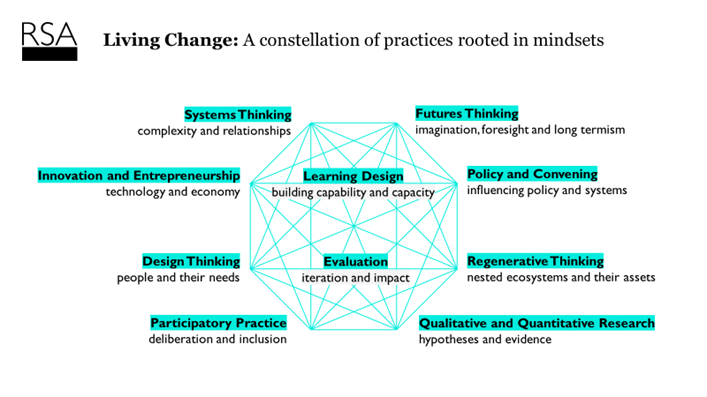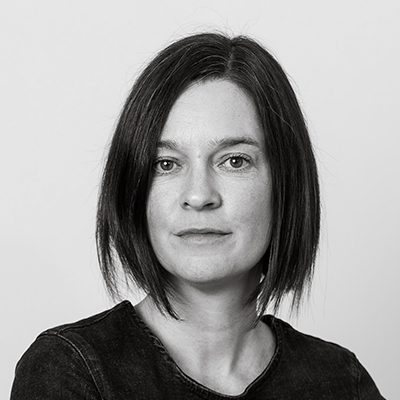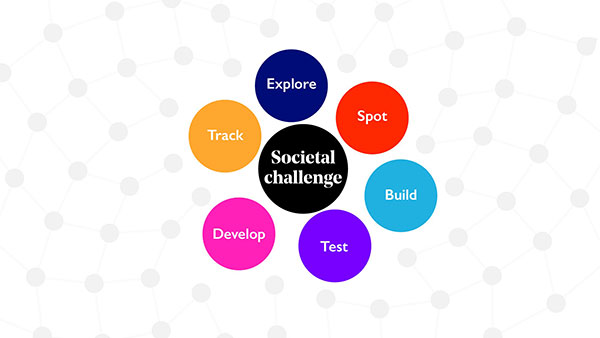We enter 2022 with optimism and resilience for the future, against a backdrop of ever-deepening challenges: rising COVID cases, carbon emissions and social inequalities.
This is because these very challenges have spurred us to explore and reflect on the kinds of practices, mindsets (and communities behind them) that need to come together to move us beyond our current failing systems, towards imagining and creating desired systems that meet collective planetary needs.
This year, we will be actively seeding, nurturing, and growing these practices and mindsets in our teams, across our community of fellows, and through our work with partners. So, this feels like a good moment to share with you this constellation of practices and mindsets, in the hope that it might inspire you to think about what you bring to your own change work, and how you might work with others in 2022.
The constellation of practices sits at the heart of our Living Change approach, which we apply across projects and programmes with communities, organisations and ecosystems to tackle complex social and environmental problems, and to imagine and realise better futures for people and planet.
Aiming for the stars
Why a constellation? Because we don’t believe a single area of practice or a single frame of mind is sufficient to grapple with the interconnection of complex challenges (in Donella Meadows’ words), entanglement of systems (in Indy Johar’s words), and diversity of ecological and cultural contexts (in Daniel Christian Wahl’s words) that make up our world. Each practice and its underpinning mindset brings strengths but also has limitations when acting alone, failing to show us the bigger picture and broader patterns. As you’ll see below, some are well-established, some are emergent. Some are often placed in confrontation or even competition with one another. But all add valuable nuance and have the potential to be woven together through harmonious tension to transform the changemaker’s ‘craft’ into a whole that is greater than the sum of its parts. Shaping a rich palette of colours beyond the primaries, that is better fit for shaping the future of our society and ecosystems.
The practices draw from disciplines across design, innovation and research to ensure systemic and long-lasting impact. Christopher Smith and Ottoline Leyser speak strongly of the misconception that innovation is at the end of a stream that flows in one direction: “Upstream is the pure water of research, downstream is the muddy but fertile silt of business… The system is far more interconnected, and we need to recognise that research and innovation are synergetic and frequently blended.”

We’ll briefly define each area of practice below, alongside its underpinning mindset, its value and limitation, before weaving it into the next area of practice and mindset. The below narrative is for illustrative purposes only, and the constellation does not necessarily need to show up in change work in this order or combination of practices.
Systems matrix
Let’s start with systems thinking; a practice that dates back to antiquity but that has grown in popularity in the last decade among changemakers in the western world. Systems thinking as a mindset is centred on understanding the complexity and relationships in our world, and seeing the systems as wholes, rather than splitting them into discrete parts. Systems thinking can help us understand the complexity, dependency, and causality of challenges in our current world, while identifying levers or nodes that could be pulled to create ripples of change that alter the current system towards a desired future system.
Systems thinking as a holistic and relational approach to understanding complexity, should be complemented with qualitative and quantitative research practices. These practices weave in the rigour needed to test hypotheses, verify root causes, and build the evidence behind some of the patterns and relationships we are spotting and sensing in the systems we are looking to understand, change or imagine. They enable us to start building a robust foundation of the what, how and why, from which we can travel forward.
But how do we know that the evidence we are gathering through these practices is inclusive, and that insight and foresight represent the plurality of perspectives affected by and affecting the challenges and the change? Grounding in participatory practices can help us take more deliberative and inclusive ways that harness the inherent intelligence and agency of those at the heart of change to lead the change. Participatory approaches also help us challenge existing power imbalances and hierarchical structures that sometimes stifle impact and true innovation driven by lived experience. Professor Graham Smith, and Jane Davidson (both advocates of participation and deliberation) go as far as asserting that these practices offer the most effective democratic response to protecting the interests of the generations to come.
Think designed futures
So how do we move beyond talking about today’s problems and a state of analysis paralysis, towards imagining and realising better futures for people and planet, while building resilience in response to unexpected and unprecedented shocks? We weave in futures thinking, and the diversity of mindsets that cluster around these practices; from predictive to imaginative, from data-driven foresight to speculative futures, and everything in between. Our Stitch in Time report makes a strong case for the value of futures thinking in change work. With futures thinking, we weave in ‘long-term’ and ‘long time’ mindsets (Ella Saltmarshe and Beatrice Pembroke), as well as a ‘good ancestor’ mindset (Roman Krznaric), so we can start to care about the long-term future of our planet and generations as a way to start taking responsibility for it in the short-term. We also weave in ‘collective imagination’ and the necessity and the power of the collective to have the ability and agency to shape their own futures. This mindset is a nascent one with stewardship from a brilliant community of thinkers and practitioners including Geoff Mulgan, Rob Hopkins, Cassie Robinson and The Emerging Futures Fund, Superflux, Department of Dreams and more.
From our ambitions for the long-term future, we can then weave in design thinking as a practice that can support us to return to the present, to reshape the ideas and actions that we might take today to create the desired future trajectory. Design thinking’s mindset is rooted in putting people at the centre of designing solutions to the problems that affect their lives. This mindset overlaps with that of participatory practices but is more maker-based; involving people in actively co-designing and co-producing interventions, and in prototyping and testing early and quickly to learn and iterate. But design thinking can be limited in focusing on people’s immediate needs before their assets or strengths, and in putting people before planet.
Regeneration through innovation and entrepreneurship
This creates the necessity to weave in regenerative thinking - a practice sometimes also referred to as regenerative design - which recognises that people and planetary needs are intertwined, and that social and ecological communities have the potential to be sources of health and regeneration for all life on Earth. Our colleague Josie Warden has written extensively on regenerative thinking in her paper Regenerative Futures: From sustaining to thriving together, as has RSA Bicentenary Medallist Daniel Christian Wahl in their medium article Regenerative Futures: Redesigning the human impact on Earth. The mindsets behind regenerative thinking take us away from the more recent linear growth and extractive and exploitative ways of living, working and producing, towards the more natural circularity and circulation of resource within planetary boundaries, to replenish and restore our world for the generations to come. It’s important to acknowledge that regenerative thinking holds roots in deep indigenous knowledge as practiced by communities and their ancestors for hundreds of thousands of years to regenerate our social and natural world. Melanie Goodchild speaks openly of this in her Creating change together RSA event from November 2021.
The transition from extractive or even sustainable thinking, to regenerative thinking requires a significant paradigm shift that necessitates the creation of entirely new economic, social and political systems. There is value here in weaving in innovation and entrepreneurship practices as a means to take action to disrupt current systems. Traditionally, innovation and enterprise have explored what is possible to achieve through the technology we have, rather than the problems we are trying to solve or the futures we are trying to realise. They have also been arguably pre-occupied with venture building and capital growth over social and ecological outcomes.
Inspiring stakeholders and policymakers
However, there is a growing movement of practitioners and thought leaders who see innovation and entrepreneurship as mechanisms for transitioning and transforming whole systems and the business models, markets, structures, behaviours and mindsets that operate within them. An example is The System Innovation Initiative led by Jennie Winhall and Charles Leadbeater of the Rockwool Foundation, which brings together the best of both worlds from innovation and systems thinking to create systems-shifting innovation.
For emerging innovations to truly infiltrate and change markets, funding, infrastructure and policy, and to ultimately shift the wider narratives, paradigms and value systems we operate within, we need to draw on policy and convening practices. This is a strategic area of practice rooted in the mindset that the policies governing our lives are created by people, and that people can be influenced. Through strategic approaches of identifying key stakeholders at the regime level - to convene, engage with, understand incentives and disincentives, inspire, and excite with new change ideas and possibilities - we can influence those who hold the levers to change current systems towards more desirable ones.
Therefore naturally, policy and convening practices are woven into systems thinking to identify key levers, key players, and complex relationships to drive change. So, we work our way back to systems thinking around the constellation, and so on.
Shaping future changemakers
At the core of this constellation, (and connected into all other practices) are learning design and evaluation practices. We believe responding to complex social and ecological challenges and change, requires the development of new competencies among changemakers, some of which relate to the mindsets and practices we shared above. So, we draw on learning design practices to support with capacity and capability building for shaping the mindset and ‘craft’ of the changemaker of the future, within communities, organisations and systems. Similarly, working with emergence and uncertainty as we craft the future system requires systemic evaluation practices that move beyond measuring short-term outputs, towards measuring long-term change in behaviours, structures, mindsets and narratives as valuable outcomes.
In this blog, we are sharing openly with the RSA community our evolving thinking on Living Change practices and mindsets. We are aware that the very nature of our world is living and changing. Our understanding of how to shape a future better for people and planet is evolving too, as must our Living Change practices and mindsets. Over the coming months, RSA colleagues will be sharing more blogs that bring to life, through case stories, how we weave these practices across our work to create change.
We would warmly welcome any reflections or builds from The RSA’s community of changemakers across the valuable and diverse experiences and expertise you bring. Get in touch with [email protected] and [email protected] and share any feedback.
Many thanks to RSA colleagues who have contributed to the thinking and work behind this constellation: Ian Burbidge, Josie Warden, Rebecca Ford, Tom Kenyon, Hannah Webster, Ruth Hannan, Ella Firebrace, Riley Thorold, Fabian Wallace-Stephens, Alan Lockey and Mark Hall.
Thank you also to Dave Jarman from the University of Bristol's Centre for Innovation and Entrepreneurship for his thoughtful feedback.
To correct this error:
- Ensure that you have a valid license file for the site configuration.
- Store the license file in the application directory.
Related articles
-
Learning about Living Change
Blog
Rebecca Ford
Rebecca Ford, our Head of Collaboration and Learning Design, is hosting a three-month pilot learning journey to explore how the Living Change Approach can strengthen individual and organisational capacities to effect change. In this blog she explains why and how we are delivering the pilot.
-
The Living Change Approach
Our Living Change Approach is for everyone who is passionate about making social change happen.
-
Make Change Happen
We're supporting social innovators around the world to understand the challenges of our time and identify the actions needed to create lasting change.





Join the discussion
Comments
Please login to post a comment or reply
Don't have an account? Click here to register.
There are some meta-practices (really more "mindsets") that are missing. For example social constructionism - not to be confused with the European version of social constructivism. This well developed theory and mindset can be and is applied to a vast number of relational/therapeutic and organizational interventions. Some names that may be familiar to readers are "Narrative Therapy" and Appreciative Inquiry"
‘Systems thinking as a holistic and relational approach to understanding complexity, should be complemented with qualitative and quantitative research practices.’ I would be interested in seeing examples of how this is being applied. From my experience qualitative and quantitative research practices are unable to work with a holistic and relational environments due to their nature of ‘complexity’ being in continual flux.